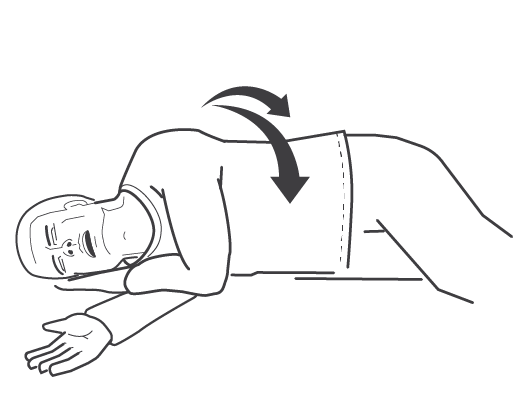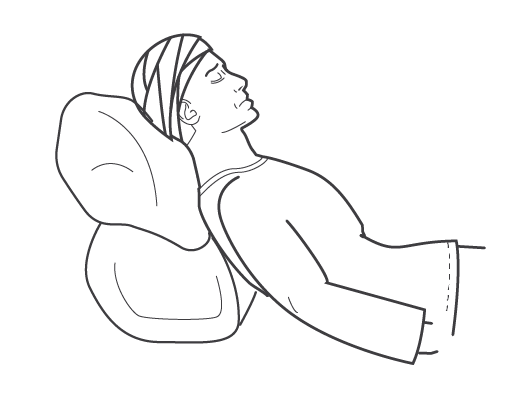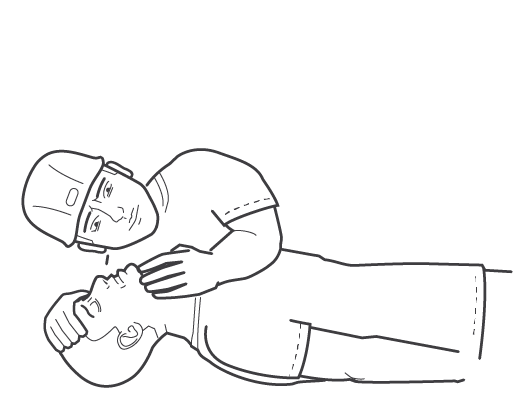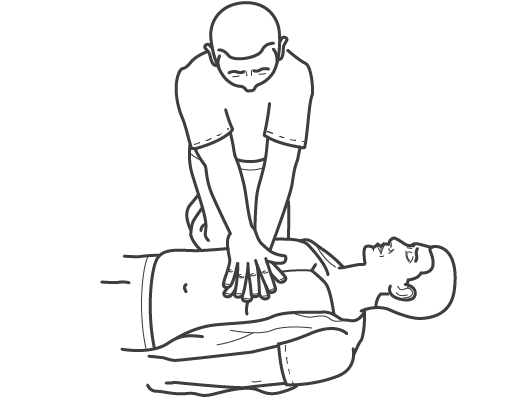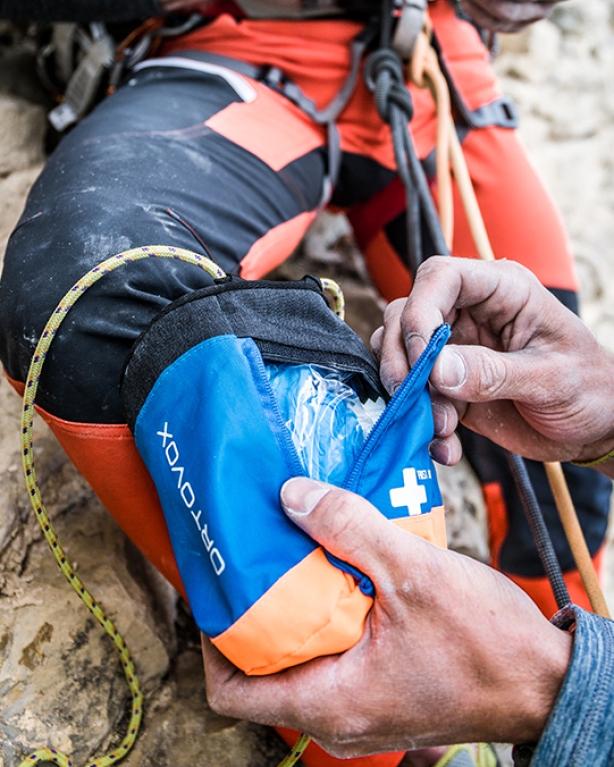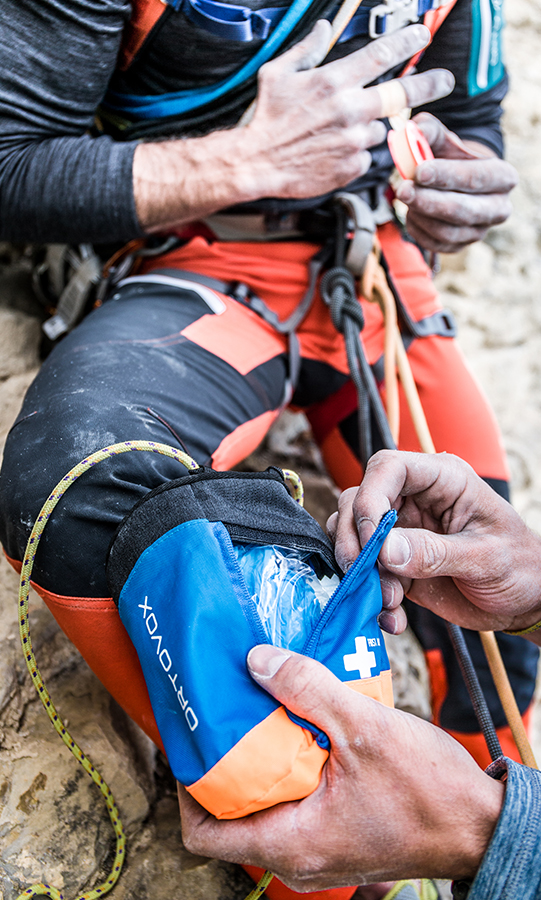Before the responder gets to work, they should take a physical and mental step back and take a deep breath. Only if the responder is in a reasonably calm mental state can they make good decisions. When the first responder takes stock of the overall situation this allows them to recognize objective hazards, judge the accident and consider their next steps.
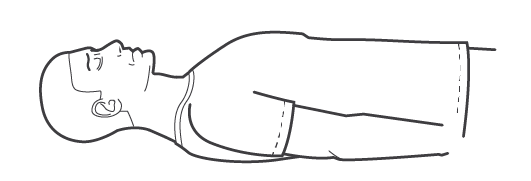
Your own safety is paramount! In alpine climbing, the rope team will often be in precipitous terrain and at risk of falling rocks or ice and other hazards. You need to ensure your own safety before helping injured people! In a worst-case scenario, if it is too dangerous to help yourself, you should make an emergency call and wait for a professional rescue team.
If there are several people at the site of the accident, the safety of the group must be ensured (particularly during guided climbs). Only then can first responders go to help the accident victim.
The dangerous area should be secured for the protection of yourself and others: For example the accident site can be cordoned off or visibly marked. While securing the accident scene on the rock face is often not possible or necessary, it can be necessary for accidents during ascent or descent in order to prevent further damage.
Is the accident victim in a precipitous location? Is there a risk of falling rocks or ice? If the accident scene is at risk of objective hazards, the individual should be moved out of the dangerous area and taken a short distance to a safe location – as long as this is appropriate for the responders and does not endanger their own safety. In precipitous terrain the first responder must protect themselves and the injured person from further slips or falls. If this is not possible, the responder’s only other option is to make an emergency call and wait for a professional rescue team.
If there is heavy bleeding, this must be treated immediately with a pressure bandage. This is done before speaking to the accident victim and irrespective of whether they are conscious or unconscious.
The first responder should kneel down next to the injured person and speak to them. If the injured person does not react, the first responder should shake them gently and attempt to speak to them again in a louder voice.
Any time someone becomes unconscious it represents an acute risk to life. Here lifesaving emergency measures are always the number one priority!
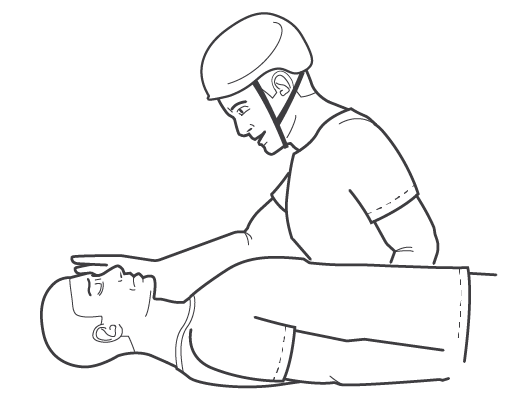
Get help
While in some mountain regions there can be good cell reception even at an altitude of 4,000 meters, in other secluded regions it may be impossible to make an emergency call with a cell phone. Here the alpine distress signal is the means of communication. The distress signal can also be helpful for mountain search and rescue if they are having trouble locating the exact accident site.
If the rescue team comes by air, it provides useful information that makes working with the helicopter easier.

